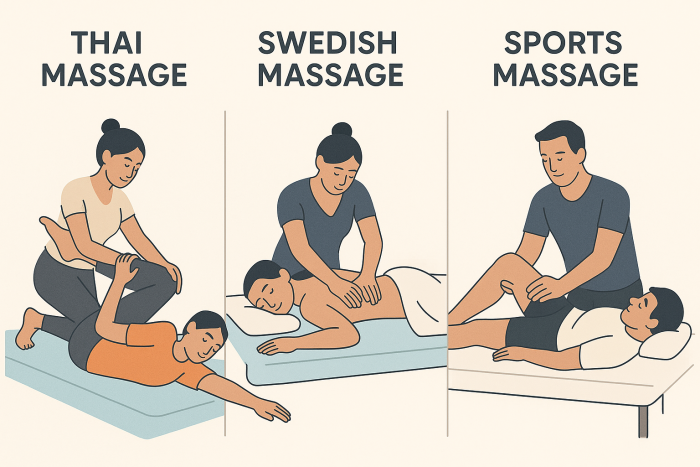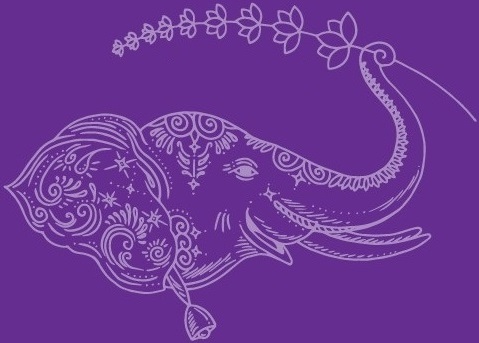
What is the difference with each massage?
A massage is a very effective way to reduce stress, both physically and mentally, but what are the differences?
Thai massage:
Floor mat, fully clothed session with assisted stretching, acupressure, and rhythmic movements to improve flexibility and energy flow.
Swedish massage:
Oil-based table massage using long, gentle gliding strokes for relaxation and general tension relief.
Sports massage:
Goal-oriented bodywork for active people, combining deep tissue, compression, and stretching to prevent injury and aid performance and recovery.
Essential techniques
- Thai massage techniques: Acupressure along “sen” energy lines, assisted yoga-like stretches, compression, pulling and rocking; typically on a floor mat, fully clothed, no oils.
- Swedish massage techniques: Effleurage (long strokes), petrissage (kneading), friction (deep circular), tapotement (tapping), and vibration; performed on a massage table with oils or lotions for smooth gliding
- Sports massage techniques: Mix of deep tissue work, targeted compression, stretching, and joint mobilization tailored to sport-specific demands; aims at injury prevention and performance improvement.
Key benefits:
- Thai massage: Enhanced flexibility and range of motion, energetic feel, circulation and energy balance via stretches and acupressure; intensity can vary from gentle to vigorous
- Swedish: Relaxation, reduced stress and anxiety, improved circulation, general muscle tension relief; ideal for first‑timers or those sensitive to pressure
- Sports: Reduce muscle soreness and tension, speed recovery, address overuse patterns, improve performance; suitable for athletes at all levels.
Positioning, clothing, and oil use:
- Thai massage: Fully clothed in loose attire; no oils; floor mat; more active/passive-yoga experience
- Swedish massage: Undressed to comfort level, draped; oil or lotion used; table-based
- Sports massage: Usually table-based; variable clothing depending on focus area; may use oil for glide or dry techniques for compression and stretching.
Who is most suited for each option:
- Thai massage: Active individuals or those wanting flexibility gains and an energizing, stretch-heavy session
- Swedish massage: Anyone seeking calm, stress relief, and gentle muscle relaxation—ideal for first‑time clients or those with general tension
- Sports massage: Athletes and regular exercisers needing targeted work for performance, injury prevention, or rehab.
The bottom line:
Choose Thai massage for dynamic stretching and flexibility, Swedish massage for soothing relaxation and Sports for performance-focused, targeted muscle work.
